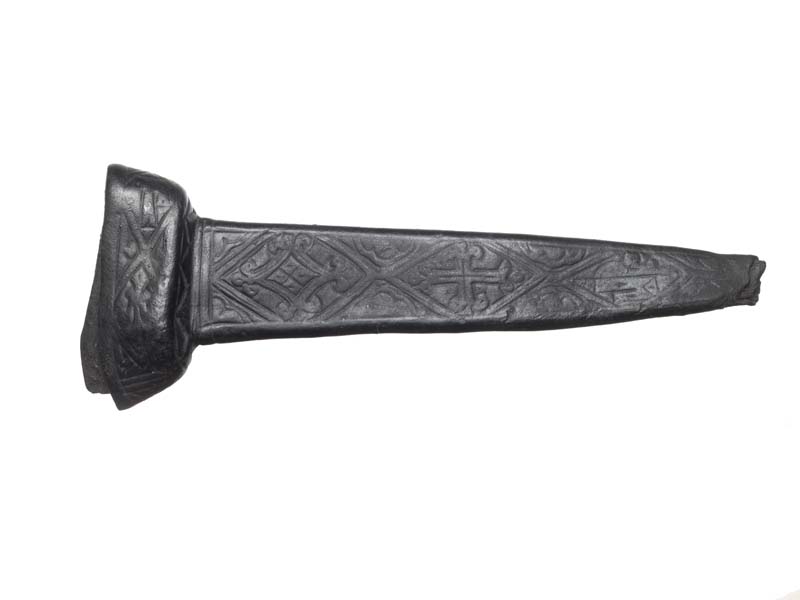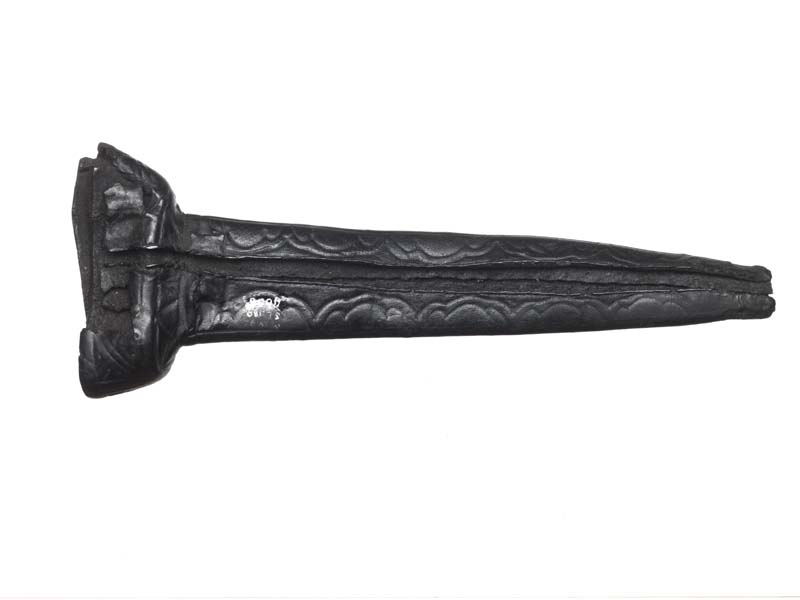About this object
-
ID:
4658
Production date:
Late Medieval; 14th century
-
Location:
In Store
-
Leather sheath ofr a rondel dagger. Decoration in two fields denoting the blade and the rondel hand guard section; impressed decoration. The top of the sheath flairs out to accommodate the rondel hand guard. This section on the front is decorated with two lozenges, one containing a triple towered castle and the other a fleur-de-lys, both lying horizontally to the rest of the sheath with a row of triangles below. The front of the blade section is decorated with three vertical lozenges containing (from top) a lozenge with fleurs-de-lys terminals (a mascle fleury (or pommetty)), a crucifix with tri-lobed terminals (a cross voided pommetty), and a fleur-de-lys dimidiating a castle triple towered. The heraldry on this sheath may refer to the union through marriage of the houses of Toulouse and Poitou (Wilmott in Cowgill et al, 1987, 47-49). The back has a centre-back seam with extremely fine edge to grain stitch holes. There are the remains of at least four slots near the top of the sheath on the back. The back of the handle is decorated by a row of saltires within rectangular fields. The back of the blade is decorated with a vertical row of semi-quatrefoils either side of the seam. There is a leather sheath lining with the flesh surface facing out.
< ...Read more -
Measurements
L 205 mm; W 76 mm
-
Materials
leather
-
Last Updated
2024-03-14
Record quality:
Not every record in Collections Online is complete. Some have low quality images designed purely for recognition, while some have been catalogued only to a basic standard. This graphic is designed to give you an impression of the quality of data you can see. 100% meets all our current data standards and has a high quality image, 20% is a basic record with no image. Individual record quality can change over time as new photography is carried out and records are worked on.
X








